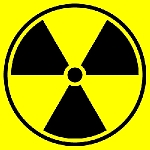 Aboriginal communities aren’t happy with Ontario’s plans to store nuclear waste underground. And they say they have a veto. The Saugeen Ojibway First Nation has reminded Ontario Power Generation that no new nuclear waste dump will be built near it without aboriginal consent.
Aboriginal communities aren’t happy with Ontario’s plans to store nuclear waste underground. And they say they have a veto. The Saugeen Ojibway First Nation has reminded Ontario Power Generation that no new nuclear waste dump will be built near it without aboriginal consent.
By: Thomas Walkom National Affairs, Published on Wed Aug 06 2014
Ontario’s plan to bury nuclear waste beside Lake Huron is running into heavy weather.
Ontario Power Generation, the Crown corporation behind the proposed dump site for low and intermediate level radioactive waste has publicly acknowledged that its long-term safety plans are based, in part, on new technologies that have not yet been invented.
As the Star’s John Spears reported this week, that explanation hasn’t endeared itself to the small but politically important aboriginal communities near the proposed Kincardine dump site.
In a brief to the federal review panel that will eventually rule on the plan, the Saugeen Ojibway Nation reminds OPG of its assurance that no nuclear waste dump will be built without aboriginal consent.
Will that consent be given? The First Nation doesn’t say. But in its brief, it does express profound unease with what it calls OPG’s vague and open-ended scheme.
Plans for this so-called deep geological repository at Kincardine have been in the works since 2005.
Initially, the proposed dump was supposed to house waste such as the rubber gloves used by nuclear workers — items with relatively low levels of radioactivity.
Right now, nuclear waste from Ontario atomic power generating plants is stored on the surface.
But once federal hearings started last fall, OPG changed tack. It announced it wanted to double the size of the underground dump to roughly 400,000 cubic metres — in order to accommodate waste that will be produced when the province’s existing nuclear plants are taken apart.
This so-called decommissioning waste, which includes components such as pressure tubes (but not nuclear fuel), will remain highly radioactive for thousands of years.
Critics cried foul. The three-member federal panel hearing the proposal ordered OPG to better explain how it would handle this more difficult waste.
It also told the Crown utility to look into why a similar U.S. nuclear waste facility near Carlsbad, N.M., — cited by dump proponents as a model — suffered two accidents in February.
In one, a truck caught fire underground. In another, small amounts of plutonium were inadvertently released into the atmosphere — possibly because waste had been mixed with the wrong kind of kitty litter.
The response from OPG, also filed with the review panel, is charmingly optimistic. It agrees that decommissioning waste could present problems for the proposed Kincardine dump. But, noting that such waste won’t be a problem for at least 20 years, it states blithely that someone will have figured out something by then.
Or, as the Crown corporation puts it: “Since an OPG decision to emplace decommissioning waste into the DGR would not be made until 20-40 years from now, it is reasonable to assume that advancement in technology will contribute to a meaningful reduction in the volume of (radioactive) metals.”
Asked to respond to the accidents in New Mexico, OPG said — in effect — that it wouldn’t be as sloppy as its American counterpart.
The U.S. problems, it said, were “related to a degraded safety culture” there. Ontario, it went on, is sure to do better — a hopeful, if not necessarily convincing, conclusion.
None of this means the dump project is doomed. It has powerful supporters.
The Canadian Nuclear Safety Commission, which regulates the atomic industry and which, along with the federal environment minister, appointed the review panel, is on side.
In its brief to the panel, the commission says it fully buys OPG’s latest arguments.
The nuclear industry is also on side, as are unionized power workers. So is the town of Kincardine, which is already home to the Bruce Power nuclear plant.
Still, the prospect of an aboriginal veto adds a new dimension to the debate. Eventually, all those rubber gloves and used nuclear parts will be put somewhere. But they may not end up in underground caverns beside the Great Lakes.
Thomas Walkom
